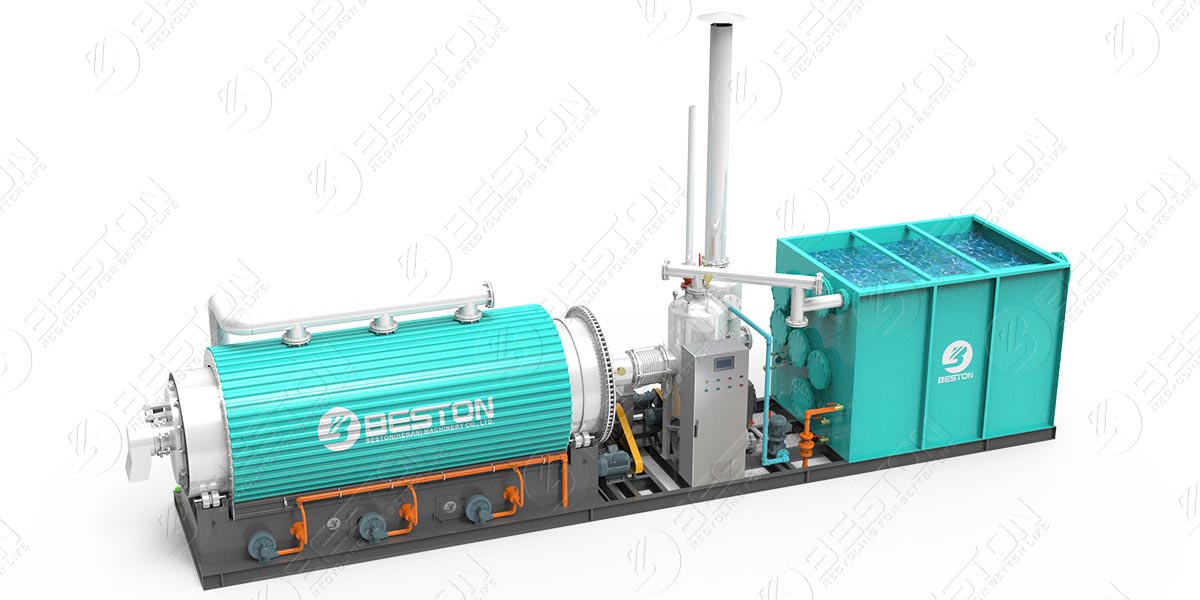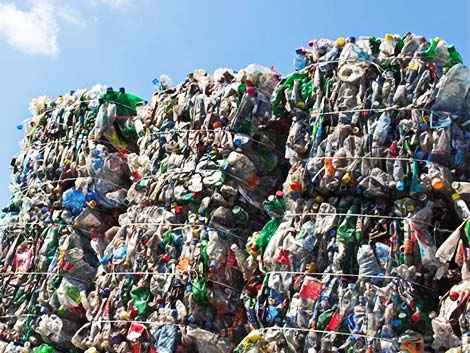The global push towards sustainable waste management and renewable energy sources has placed pyrolysis technology in the spotlight. Pyrolysis plants, which convert organic materials into usable products like bio-oil, syngas, and biochar, are gaining traction. However, the cost of establishing and operating these plants is a crucial factor that influences their adoption. This article delves into the various cost components of pyrolysis plants, exploring their economic feasibility and the factors affecting their overall cost structure.
Understanding Pyrolysis
Pyrolysis is a thermochemical decomposition process that occurs at elevated temperatures in the absence of oxygen. It transforms organic materials into three primary products: bio-oil, syngas (synthesis gas), and biochar. The feedstock for pyrolysis can include various waste materials such as plastic, tires, biomass, and agricultural residues.
Initial Capital Investment
The initial capital investment for a pyrolysis plant is substantial and includes the pyrolysis plant cost, the cost of land, equipment, infrastructure, and installation. The size and capacity of the plant significantly influence these costs. Small-scale plants, processing a few tons of feedstock per day, might cost a few hundred thousand dollars, while large-scale commercial plants processing hundreds of tons per day can run into tens of millions of dollars.
1. Land and Site Preparation: The cost of land varies widely depending on the location. In industrial areas or urban settings, land prices can be steep. Site preparation includes clearing, grading, and installing necessary utilities such as water, electricity, and gas lines. For example, a pyrolysis plant in an urban area might incur higher land costs compared to a rural setting.
2. Equipment Costs: The core equipment for a pyrolysis plant includes the reactor, feedstock handling system, condensation system, gas scrubbing system, and storage tanks. Advanced technology and high-quality materials increase the durability and efficiency of the equipment but also add to the cost. For instance, a high-capacity pyrolysis reactor with automated feeding and output systems could cost several million dollars.
3. Construction and Installation: Construction costs encompass building the plant’s infrastructure, such as foundations, support structures, and housing for the equipment. Installation involves setting up the machinery, connecting it to utilities, and ensuring everything functions correctly. This phase often requires skilled labor, further driving up costs.

Operational Costs
Once operational, a pyrolysis plant incurs various ongoing costs, including feedstock procurement, labor, maintenance, energy consumption, and waste management.
1. Feedstock: The cost of feedstock can vary significantly based on its type and availability. Biomass feedstock like wood chips or agricultural residues may be cheaper compared to plastics or rubber, which might require additional processing. Additionally, the cost of transporting feedstock to the plant can be a significant expense, especially if the plant is located far from the feedstock source.
2. Labor: Operating a pyrolysis plant requires skilled technicians and engineers to oversee the process, conduct maintenance, and ensure safety standards. Labor costs can vary based on the plant’s location and the local labor market. For instance, labor costs in developed countries are generally higher compared to developing nations.
3. Maintenance: Regular maintenance is essential to ensure the smooth operation of the plant. This includes routine inspections, repairs, and replacement of worn-out parts. Maintenance costs are influenced by the quality of the equipment, the plant’s operating conditions, and the frequency of maintenance activities.
4. Energy Consumption: Pyrolysis is an energy-intensive process, requiring substantial amounts of heat to decompose the feedstock. Energy costs depend on the local energy prices and the plant’s energy efficiency. Some plants use a portion of the syngas produced as a fuel source, which can help offset energy costs.
5. Waste Management: Managing byproducts and waste from the pyrolysis process is crucial. This includes handling non-condensable gases, liquid effluents, and solid residues like char. Proper waste management practices are necessary to comply with environmental regulations and avoid penalties. See the waste plastic pyrolysis machine here.
Revenue Streams and Economic Viability
The products generated by pyrolysis—bio-oil, syngas, and biochar—can be sold to generate revenue. The economic viability of a pyrolysis plant depends on the market demand and prices for these products.
1. Bio-oil: Bio-oil can be used as a renewable fuel or a feedstock for chemical production. Its price varies based on its quality and market demand. High-quality bio-oil with low contaminants can fetch higher prices, making it a valuable product for the plant.
2. Syngas: Syngas, a mixture of hydrogen, carbon monoxide, and other gases, can be used as a fuel for power generation or as a chemical feedstock. Utilizing syngas for in-plant energy needs can reduce operating costs, while excess syngas can be sold to generate additional revenue.
3. Biochar: Biochar has applications in agriculture as a soil amendment, improving soil fertility and carbon sequestration. Its market value depends on its properties and local demand. In some regions, biochar can command premium prices due to its environmental benefits.
Financial Incentives and Government Support
Governments worldwide are increasingly supporting renewable energy and waste management projects through financial incentives, grants, and subsidies. These incentives can significantly reduce the initial investment and operational costs of pyrolysis plants.
1. Grants and Subsidies: Many countries offer grants and subsidies for renewable energy projects, including pyrolysis. These financial aids can cover a portion of the capital investment or operational expenses, making the project more financially viable.
2. Tax Incentives: Tax incentives such as tax credits, accelerated depreciation, and exemptions can lower the overall tax burden on pyrolysis plant operators. These incentives can improve the plant’s profitability and attractiveness to investors.
3. Renewable Energy Certificates (RECs): In some regions, pyrolysis plants can earn Renewable Energy Certificates for the clean energy they produce. These certificates can be sold to companies looking to offset their carbon emissions, providing an additional revenue stream. The tire pyrolysis machine is also contributing to energy renewable.
Challenges and Considerations
Despite the potential benefits, several challenges need to be addressed to ensure the economic success of pyrolysis plants.
1. Feedstock Supply Chain: Ensuring a consistent and reliable supply of feedstock is critical. Variability in feedstock quality and quantity can affect the plant’s efficiency and product quality. Developing a robust supply chain with multiple sources can mitigate this risk.
2. Technological Advancements: Investing in advanced pyrolysis technology can enhance efficiency and product quality but often comes with higher initial costs. Balancing the need for cutting-edge technology with budget constraints is a key consideration.
3. Regulatory Compliance: Compliance with environmental regulations is essential to avoid fines and operational disruptions. This includes managing emissions, waste products, and ensuring the safety of the plant. Staying updated with regulatory changes and adopting best practices is crucial.
4. Market Dynamics: The market prices for bio-oil, syngas, and biochar can fluctuate based on various factors such as oil prices, energy demand, and agricultural trends. Conducting thorough market research and developing flexible marketing strategies can help mitigate these risks.

Case Studies and Real-World Examples
1. Plastic Pyrolysis in India: India has seen a rise in small-scale plastic pyrolysis plants aimed at addressing the plastic waste problem. These plants convert plastic waste into fuel oil, providing a dual benefit of waste management and fuel production. However, the economic viability of these plants is often challenged by fluctuating plastic waste prices and regulatory hurdles.
2. Biomass Pyrolysis in Europe: In Europe, biomass pyrolysis plants are gaining popularity due to stringent environmental regulations and high energy costs. For example, a large-scale biomass pyrolysis plant in the Netherlands processes wood waste into bio-oil and biochar, benefiting from government incentives and a strong market for renewable energy products.
3. Tire Pyrolysis in the United States: Tire pyrolysis plants in the United States focus on converting scrap tires into oil, gas, and carbon black. These plants address the growing issue of tire waste while generating valuable products. However, high capital investment and operational costs, along with the need for consistent feedstock supply, remain challenges.
Conclusion
The cost of pyrolysis plants is influenced by a multitude of factors, including initial capital investment, operational expenses, and market dynamics. While the financial outlay can be substantial, the potential revenue streams from bio-oil, syngas, and biochar, along with government incentives, can make pyrolysis an economically viable and environmentally beneficial technology. Addressing challenges such as feedstock supply, technological advancements, regulatory compliance, and market fluctuations is crucial for the long-term success of pyrolysis plants. As the world continues to prioritize sustainability and renewable energy, pyrolysis technology is poised to play a significant role in the global transition towards a circular economy. Want to know more resource recycling methods, please visit the Beston Group.